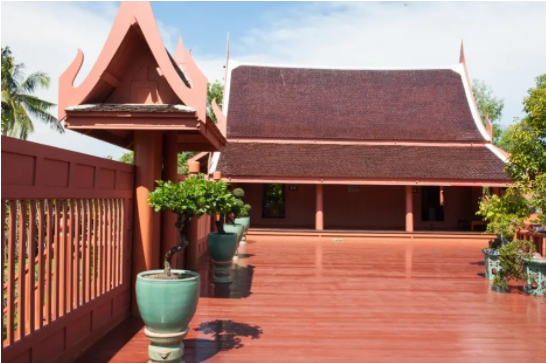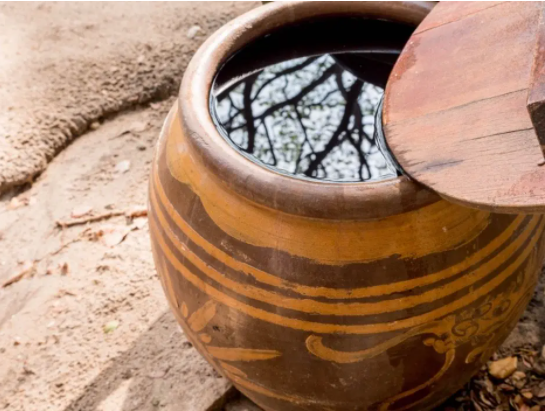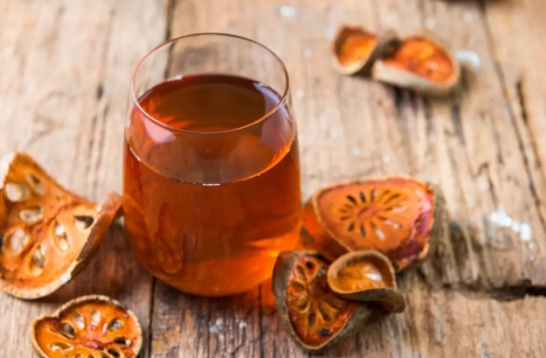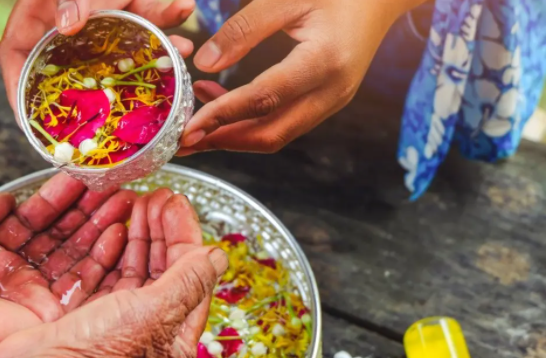Traditional Thai Ways to Beat the Heat
Traditional Thai Ways to Beat the Heat
วันที่นำเข้าข้อมูล 16 Nov 2021
วันที่ปรับปรุงข้อมูล 30 Nov 2022
Traditional Thai Ways to Beat the Heat
With temperatures in Thailand soaring above 40°C (104°F), most of us turn to technology in the forms of the air conditioner and its humble cousin, the ceiling fan. However, rewind the clock 150 years, and our ancestors didn’t have access to these modern marvels. So, what did they do about it?
They say necessity breeds creativity, and there aren’t many motivators greater than comfort. With that said, here’s a hot take on the ingenious ways Thai people had to cool off in the heat of the moment.
Traditional Thai Ways to Beat the Heat
Riverside lifestyle
Architecture
Pottery
Fashion
Foods
Drinks
Personal care
Riparian communities

Living by the river was essential for many reasons—agriculture, transportation, and commerce—but there’s also important thermodynamics at play. When water evaporates, it requires a large jump in energy, pulling heat from its surroundings; it’s the whole reason why we sweat.
Historical capitals, including Sukhothai, Ayutthaya, and Thonburi, as well as Bangkok, originally relied on a network of canals. These canals irrigated farmland while serving as roadways and marketplaces. Being so close to the water for every facet of daily life allowed Thai people to benefit from these evaporative effects and keep their cool.
Architecture

Traditional Thai homes were often angled such that there would be good air flow through the house. It’s the same concept as the wind tunnel you can find yourself in when walking between two tall buildings. It’s possible to funnel wind if you know which direction it comes from most often. In short, you can design your home to have a near permanent breeze.
Read More: Reviving Thai Design in Neo-traditional Houses
Thai houses often featured tall gabled roofs to pull up the heat and were built on stilts. These stilt houses could be built close to the water—whether it be rivers, canals, or lakes—without worrying about flooding during the monsoon season and still taking advantage of evaporative cooling. They created a shady space underneath to store belongings or shelter livestock.
Pottery

When people couldn’t live close to the river, they brought the river to them. Many traditional Thai houses feature a ceramic pot or ong filled with rainwater and a nearby ladle.
Though this practice has since waned and current usage has strayed into the arbitrary, having an ong was a great way to beat the heat. The porous clay allowed water to seep into the pot and evaporate throughout the day, keeping the rainwater cool. This let people stay hydrated with cool rainwater and conveniently pat themselves (🇹🇭) with a moist cloth, instead of drawing a full bath.
Some modern tips and tricks include lightly misting your bed sheets or leaving out bowls or plates of water out in a room.
Fashion

The early Rattanakosin style of clothing (🇹🇭) made use of breathable textiles like cotton and silk and breezy sarongs. During this period, men often went without a shirt, and women wore their hair short.
While going shirtless isn’t making a comeback, fashion houses are reviving traditional clothing like the sarong, incorporating new synthetic materials and complicated machine patterns.
Another popular garment that was worn during the early Rattanakosin era has survived into the modern era. The suea kor krachao (🇹🇭) is a round-necked, sleeveless, collar shirt that originally served as a kind of camisole worn by girls.
Once considered the mainstay of home-bound grandmothers, the suea kor krachao has been endlessly reinterpreted for all ages into a range of vibrant patterns and colors and can often be seen during the Songkran festival. This is rather fitting, as part of the water play that has characterized Songkran stemmed from the need to cool off during the hottest time of the year.
Foods

What we eat plays a big role in how well our body deals with heat, and for that reason, coconut features extensively in Thai cuisine. In addition to coconuts being widely available, coconut water is full of electrolytes and vitamins, which makes it particularly hydrating.
A popular coconut-based dessert in Thailand is lod chong, a green noodle jelly made from pandan leaves served in coconut milk and coconut water, sweetened with palm sugar. Some might chafe at the idea of consuming so much sugar, but it’s heartening to know that studies of pandan find that it plays a role in regulating blood sugar levels. Fragrant and refreshing, these kinds of desserts are perennial favorites.
Kanom jeen sao nam (🇹🇭), meanwhile, is characterized as a kind of refreshing salad made from rice noodles tossed with shredded pineapple and coconut milk. Like many dishes from central Thailand, it also balances savory ingredients, including dried shrimp, chili, garlic, and fish sauce.
Lastly, khao chae, or water-soaked rice, is a form of food preparation with a storied past. Considered by some to be a royal dish, some sources say khao chae in its current form was introduced during the reign of King Rama IV. His wife, Chao Chom Manda Sonklin, who had Mon ancestry, passed on her knowledge of the dish to the palace cooks, further entwining the Mon and Thai cuisines. Now, the rice is often soaked with fragrant jasmine water and served with several richly seasoned sides.
Drinks

Thailand has many traditional drinks that are very good at keeping you cool, even without adding ice (although these days, ice is often added anyways because why not?). These drinks are often prepared with herbs, flowers, and fruits.
Utaitip – A thirst-quenching syrup made from herbal extracts, including jasmine, lotus, cinnamon, safflower, and sappanwood.
Sappanwood finds extensive use in traditional Thai medicine to promote blood circulation, and modern studies indicate that it has an array of pharmacological benefits as an antimicrobial, anti-inflammatory, anti-oxidant, and even an anti-diabetic. Utaitip is available in small bottles, and you only need to add a few drops to a glass of water to serve.
Nam matoom – This drink is prepared from the bael fruit (also known as the wood apple or bitter orange), which is traditionally used in Ayurvedic medicine to treat fever and relieve constipation.
The dried fruit is left to infuse in water as a tea and results in a very aromatic experience, with hints of flowers and citrus. The tea is rich in vitamin C, potassium, calcium, and several antibacterial compounds.
Many traditional Thai drinks can be found on the menu of Thai restaurants and as complimentary hotel refreshments. Otherwise, you can usually spot these vendors with see-through containers full of colorful liquids. Culturally, the experience is similar to old-school soda bars.
Personal care
Have you ever noticed some Thai people putting on what appears to be loads of talcum powder? Sometimes, it’s actually “prickly heat” powder, which has a fantastic cooling effect. Using a combination of camphor, menthol, and talc, it works by absorbing sweat and reducing friction without blocking pores. For immediate effects, it’s recommended to apply the powder onto damp skin, such as after a shower.
Prickly heat powder (🇹🇭) was first invented in 1932 by Dr. Luan Wongwanich, a full 30 years after the invention of the air conditioner. However, air conditioners weren’t commonly used until the 1950s, when they first became affordable in the United States thanks to an emerging middle class that grew out of the post-World War II boom, and would take longer still to enter widespread usage in Thailand.

Taking this plunge into our history of invention really puts into perspective how good we have things these days. We can chase the night away with light, the heat with air conditioning, insects with chemicals, awkward silences with internet videos, etc. In short, we’ve lost touch with the natural world to some extent.
For thousands of years, the Thai people were able to innovate solutions to their problems. Heat happened to be a pretty common one, which resulted in a lot of really great techniques. Incorporating some of these into our lives now will not only help reduce the cost of our electricity bills but also make us more aware of our environment and give us a greater connection to our roots.
สถานเอกอัครราชทูต ณ กรุงเตหะราน
Office Hours: Sunday to Thursday, 08:30-12:00 and 13:00-16:30 (Except public holidays)